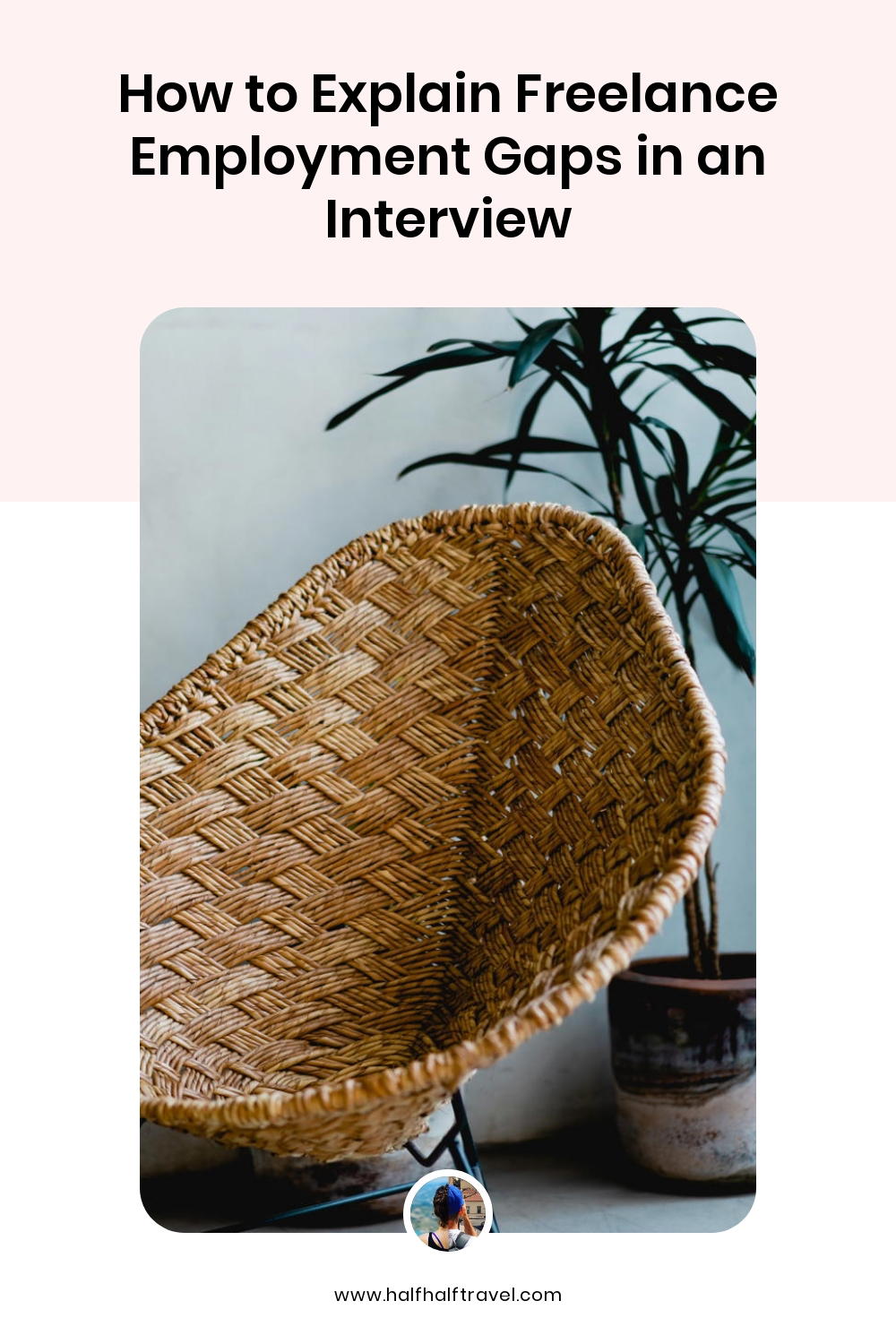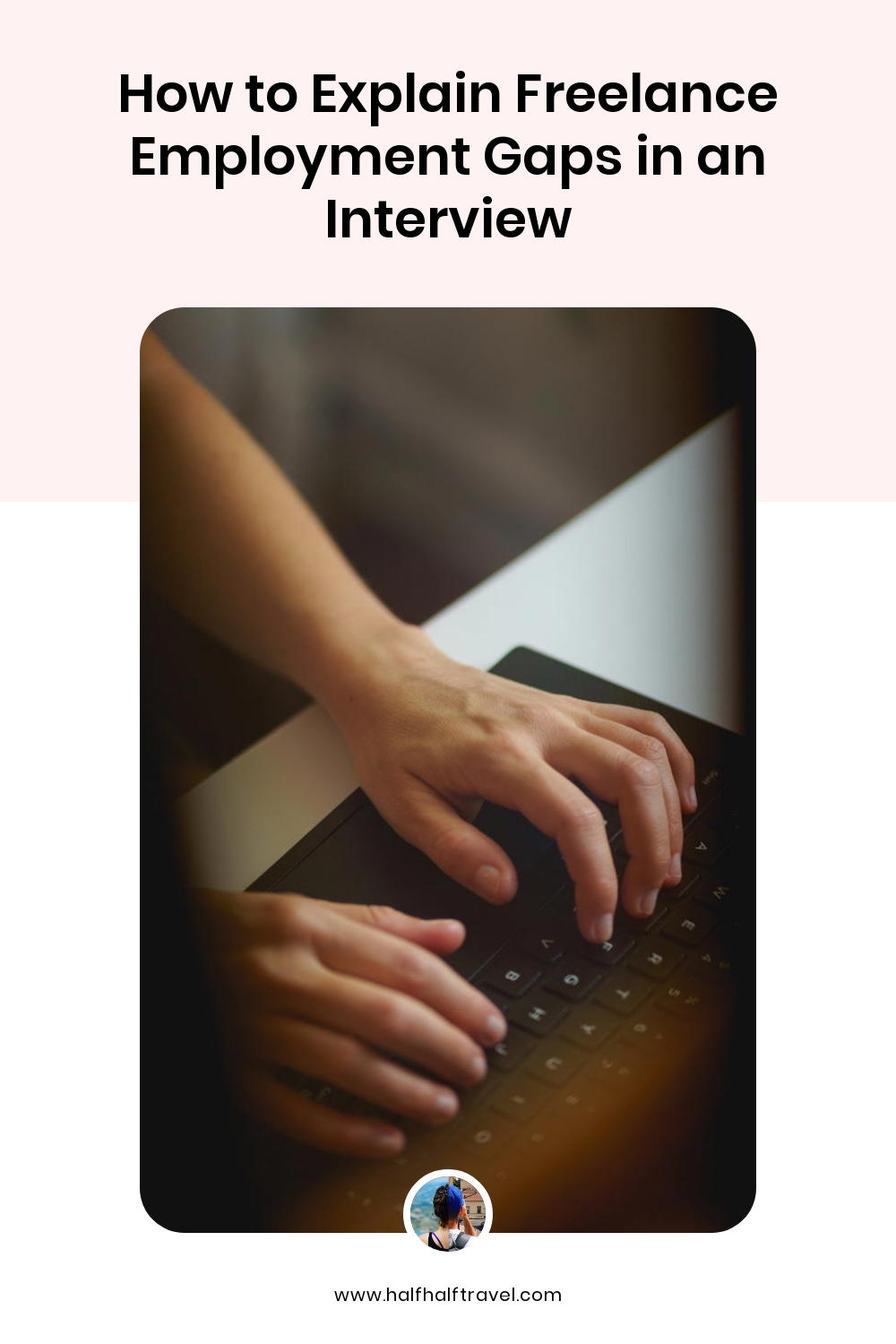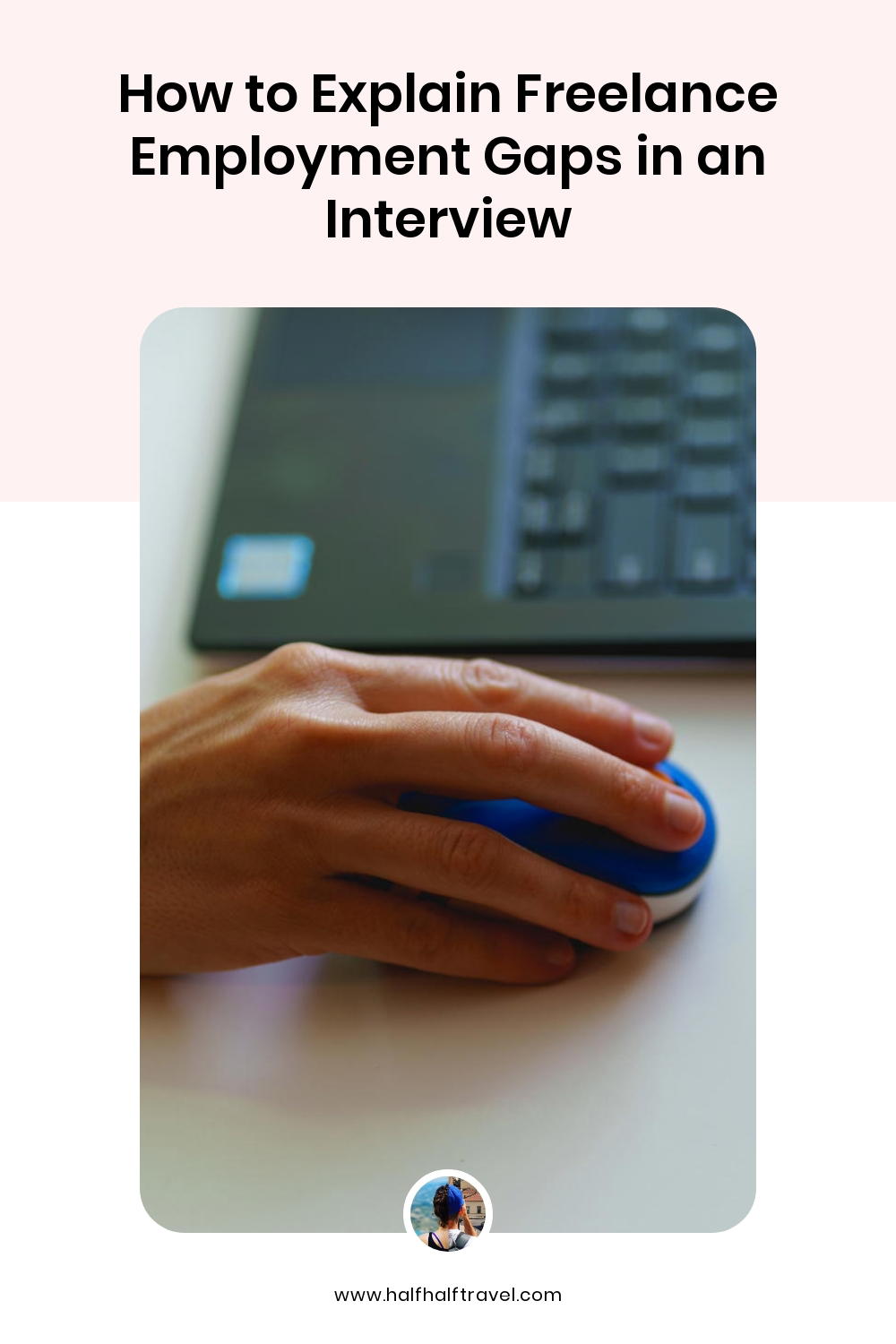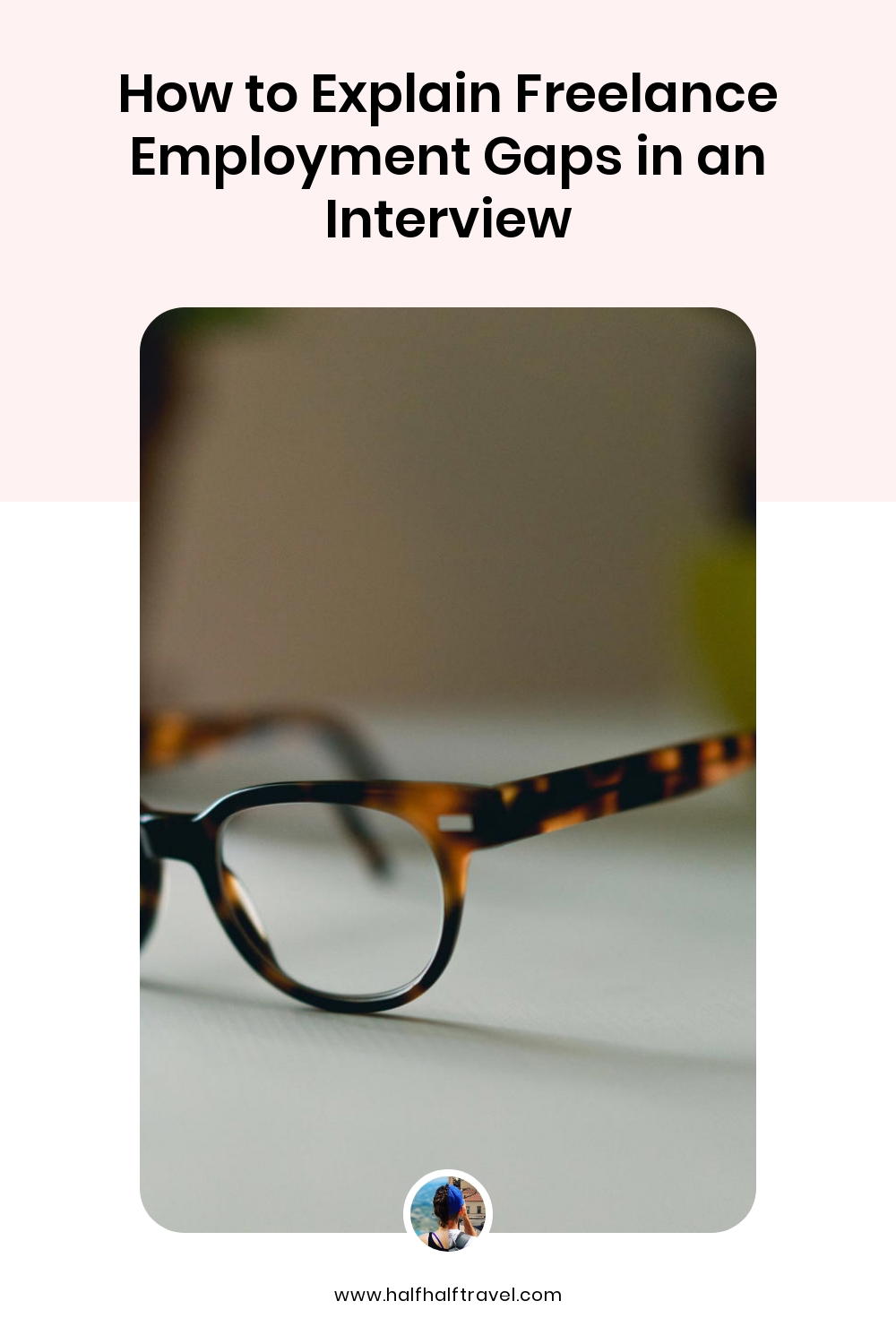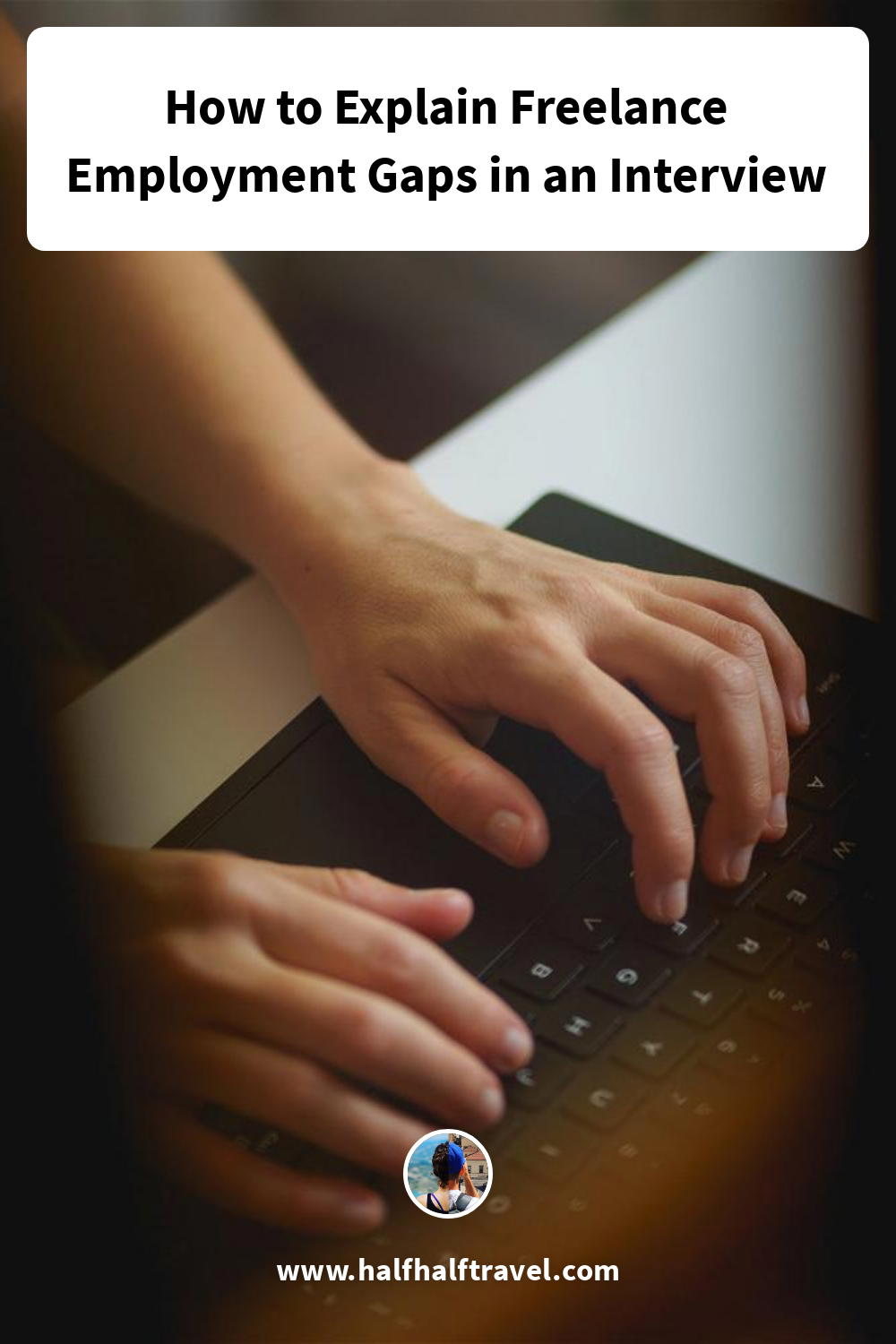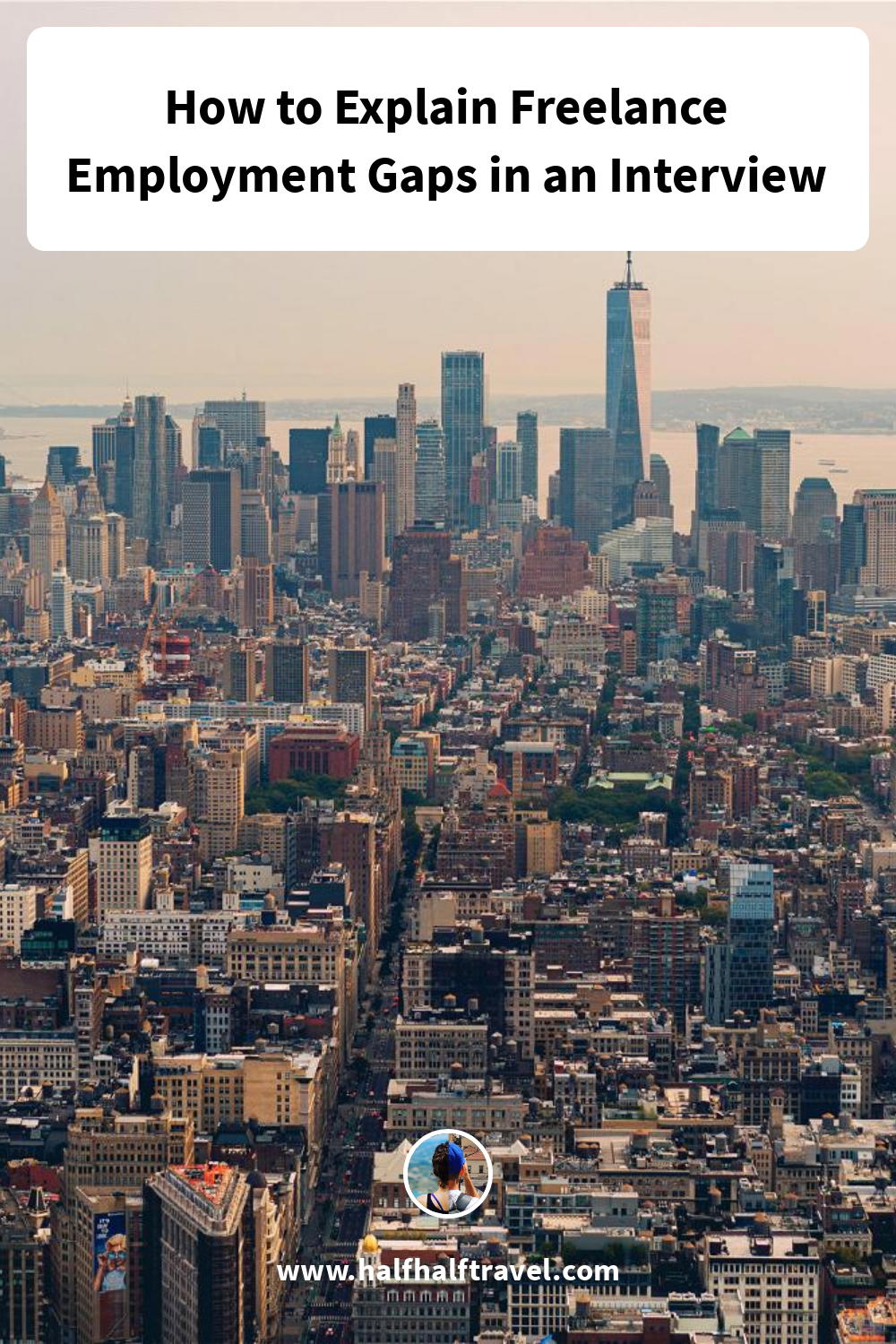How to Explain Freelance Employment Gaps in an Interview

How do you explain an employment gap as a freelancer? To justify a freelance employment gap in an interview, use these examples and tips to explain any gap between full-time jobs.
This article may contain affiliate links. We earn a small commissions when you purchase via those links — and it's free for you. It's only us (Becca & Dan) working on this website, so we value your support! Read our privacy policy and learn more about us.
Table of contents
- What is an employment gap?
- How to explain employment gaps, with examples
- How to explain a lengthy employment gap as a freelancer
- How long is too long of an employment gap for a freelancer?
- Explain how your freelancing added value to your career path.
- Highlight how your freelancing made you learn new skills.
- Tell the story of how you grew a freelance business.
- Detail how freelancing showed you what’s important in your work.
- Clarify how freelancing was a better fit than working full-time.
- Demonstrate how you took advantage of the opportunity to freelance.
- Prove that freelancing was the right career move.
- Explain how freelancing taught you about time management.
- Clarify if you actually worked MORE as a freelancer than a full-time employee.
- Ready to nail that upcoming interview?
These days, there are all types of work: full-time work, part-time work, consulting work, contract work, freelance work and even more. Work can come in tons of shapes and sizes, and if you’re a freelancer, you know this to be true.
If you’re thinking of transitioning from freelancing back to working full-time, there’s a lot to consider during your interview process.
For example, recruiters might ask you about what looks like an employment gap in your resume, if you were freelancing for a few months or years.
See more tips here about how to make your freelance resume stand out.
What you’ll need to do, in order to show that your time spent freelancing was not “time off,” and far from a vacation away from full-time work, is justify what looks like employment gaps.
Make sure to mention that freelancing is one of the biggest work trends this year, in case anyone has forgotten!

We’ve both had to explain “unique” work situations during interviews, whether it’s explaining that a side hustle is a “real business,” or explaining that freelancing can be an entire full-time commitment that might even be on top of working full-time.
Whichever your case, you’ll need some tools and tips in order to explain your freelancing situation clearly, to show recruiters and hiring managers that what looks like an employment gap on your resume was real and true time spent freelancing — whether on your own, or on a contract basis.
Looking for a full-time or part-time remote job right now? We’ve already put together the best list of remote job boards to help you through your search, whether you’re currently freelancing or not.
Before we start with how to explain employment gaps linked to freelancing, let’s cover a few basics:
What is an employment gap?
An employment gap is time spent away from work, or time off in between jobs.
The most common misconception about freelancing is that if you list time spent “freelancing” between roles at full-time employers, recruiters might view it as an easy way out of working for a company, or even worse, leisure time off, like a sabbatical or gap year of some sort.
It’s up to you to explain employment gaps transparently, and if your freelancing is being misinterpreted as an employment gap, an interview is the time to set the record straight.
How to explain employment gaps, with examples
If, during an interview, a recruiter points out that you spent 12 months with a type of “employment gap,” as is listed on your resume as “Freelance,” feel free to point out the truth, in these ways:
- “I chose to pursue starting a freelance business, as some of the moving parts were in place in my favor and gave me the opportunity to do so.”
- “I started freelancing because I had been balancing some freelance clients while working full-time, and chose to pursue a greater dedication to them to see where it would lead me.”
- “I wanted to take some time to see if freelancing was for me, and after 12 months, I decided that there were some aspects of working full-time for a company that are better fits for me right now.”
How to explain a lengthy employment gap as a freelancer
Before taking on the topic of how to explain a “lengthy” employment gap, it depends if you’re saying that you actually lacked freelance work and took time off from working completely, or, that you were working full-time as a freelancer in between full-time jobs.
How long is too long of an employment gap for a freelancer?
There’s no correct answer to this question. If you had a successful freelance business that fizzled due to external reasons beyond your control, then it makes sense that you’re looking for new opportunities that may be full-time.
It would also make sense that if you had a successful freelance business, that you didn’t need the specific commitment to a full-time role at a company that did not fulfill those goals for you at that time.
As you speak to other freelancers who have been through the same type of experience in explaining employment gaps, you will note that everyone has a different experience with varying types of professional situations.
For this reason, there’s nothing negative about having freelanced for 10 or 15 years if you have the professional achievements, skills and successes to back up your career path during an interview.
Now, let’s talk about all the ways you can explain freelancing as a gap between full-time roles during an interview.
Explain how your freelancing added value to your career path.
One of the best ways to show confidence in an interview in regard to your career choices through the years is to show how your freelancing added professional value to your chosen career path.
Here’s an example. If you’re a graphic designer, and if working at a full-time role at a big corporation didn’t allow you the creativity you needed in order to thrive, freelancing could have been your perfect and ideal way of finding autonomy.
If being a freelance graphic designer added value to your career path, then say so. Discuss in your interview that what may be perceived as a freelance gap was actually a graphic design agency you built in order to service clients directly across multiple industries, and during this process, you learned all about marketing yourself.

Highlight how your freelancing made you learn new skills.
A topic we both really enjoy talking about is what to do between freelance projects, and one of the things in this list is to learn new skills as a freelancer.
So, rather than any old “employment gap,” illustrate that your freelancing career, no matter how short or long, allowed you to learn new skills, whether it was the art of consulting professionally, selling services as a photographer, getting new clients as a freelance blogger or becoming a freelance marketing advisor through learning new areas of expertise.
Do you want to see the story of how we started freelancing via this blog? Check out the story of how we built this website.
Tell the story of how you grew a freelance business.
A freelance business is definitely not an employment gap. It’s quite the opposite.
In explaining what looks to the naked eye like an employment gap, during an interview, make sure you talk about how you grew your client base as a freelancer through various streams and through networking, and then balanced client work in all sorts of varieties.
That doesn’t sound like a gap in employment at all!

Detail how freelancing showed you what’s important in your work.
If freelancing allowed you to work during nights and weekends so that you could focus on exercise or taking care of a family member during the day, make sure you say something like this during explaining employment gaps.
If freelancing showed you that managing your own client base and managing a project pipeline from start to finish without the bureaucracy of a team is how you work best, then make sure to say you gave it a shot and freelancing gave you this opportunity.
What we mean to say here with this point about how freelancing showed you what’s important in your work is that “work” has a different meaning for everyone, and while it may be difficult for some corporate-minded recruiters to wrap their head around it, use confident language to show that freelancing equals success, too.

Clarify how freelancing was a better fit than working full-time.
If you’re applying for a full-time role after freelancing, keep in mind that recruiters may grill you for why you want to leave freelancing, and therefore, what the “employment gap” on your resume is really referring to.
If freelancing was a better fit because of time, flexibility (like working remotely and traveling) or independence, definitely say so, while commenting that rather than a “gap” in employment, your freelancing was a pivot.

Demonstrate how you took advantage of the opportunity to freelance.
Just like dating, everything in life happens at a specific time. Perhaps you were inspired to freelance by someone you met who showed you it was possible in your profession. In this case, freelancing couldn’t have possibly happened for you earlier; you hadn’t been able to visualize it previously for yourself.
In having some talking points ready to discuss a gap of freelancing during an interview, make sure to emphasize that you seized the opportunity to freelance and flew with it.
Exude confidence while you do this, and the recruiter will have no choice but to be super impressed with your drive and motivation to be a self-starter.

Prove that freelancing was the right career move.
As mentioned above, freelancing is not an employment “gap,” but rather, a career move and a decisive choice.
You may meet freelancers who claim that “freelancing just ‘happened’ to them,” but for most of us, we have to either build a business or leave a full-time job in order to put our time and souls into freelancing full-time.
Prove to the recruiter who’s interviewing you that freelancing provided you with a whole list of benefits (and make sure to never speak negatively about former employers or what your experiences at former roles were missing!).
Explain how freelancing taught you about time management.
One of the most popular interview questions is, “How do you manage your time?” We’ve probably all heard this one from time to time. Maybe your answer to this question even changes through the years.
With freelancing, you tend to be your own boss. If you have a deadline from a client, it’s up to you whether to deliver early, right on time, or risk delivering late and potentially losing that client (yikes — we don’t recommend this!).
Maybe you’ve heard us talk about our list of best productivity tips for professionals who work independently.
Well, time management is something learned ‘on the job’ during freelancing that can be used as a talking point when you want to explain the benefits of freelancing during what otherwise is perceived as an “employment gap.” It’s just like how you’ll learn what matters in a good freelance client, and when to fire bad ones.
Set the record straight and show those freelancer strengths right from the get-go during an interview.

Clarify if you actually worked MORE as a freelancer than a full-time employee.
Be careful on this one, because no one wants to hear you rant about how many hours a week you worked, in order to sound productive, successful or driven. (However, a great interview question to ask your interviewer is if they have any doubts about your work experience, and this is an opportunity to clarify.)
Instead, eloquently provide evidence about your achievements during your “freelancer gap” between full-time jobs.
Here are some examples:
- Did you deliver on 3 projects per month, for the entire year you spent freelancing?
- Did you land 2 new clients per quarter, increasing your revenue and learning how to outsource some of the work?
- Were you faced with challenges like deciding how to price and bill your services, after some trial and error with freelance clients over the first few months of freelancing?
- Did you learn what it meant to be available on nights and weekends, learning how to schedule productive meetings with clients all over the world?
- Did you have so many clients that you actually had to let go of some in order to maintain a healthy balance?

Ready to nail that upcoming interview?
Check out our guide to having a productive remote interview and you’ll be all set. Good luck!
You may also like
-
![A man sitting at a table with a laptop.]()
How to Transition from Full-time to Freelance
Looking for how to transition from working full-time to freelancing? See our best tips for how to start freelancing from scratch, secure freelance clients and when to go full-time freelance.
-
![Woman working remotely with laptop at a trendy beach cafe]()
How to Work with Clients in Different Time Zones (14 Tips)
Need the best tips for working with clients in different time zones all over the world? See how to overcome challenges of communicating across time zones, and working with dispersed teams while working remotely or freelancing.
-
![]()
How to Expertly Price Your Freelance Projects (Beginner's Guide)
Should freelancers charge hourly rates or project rates? Find out how to price freelance rates as a beginner, in these tips for freelance hourly rates, project fees, fixed fees and flat rates.
-
![A laptop computer on a table with a cup of coffee.]()
14 Pros and Cons of Freelancing Vs. Working Full-Time
What are the pros and cons of freelancing? Are there advantages and disadvantages of freelancing? See the benefits of freelancing, and differences between being freelance vs. an employee.
-
![A woman working at a desk in a small room.]()
How Many Hours Is Considered Part-time? Is Full-time Better?
What are the pros and cons of working part-time, and what are the benefits of working part-time vs. full-time? Find out here, as we discuss if employers prefer full-time or part-time employees.
-
![]()
How (And When) to Fire a Freelance Client
What’s the best most proven way to fire a freelance client? Use these examples with our “How to fire a client” sample letter and email template script.
